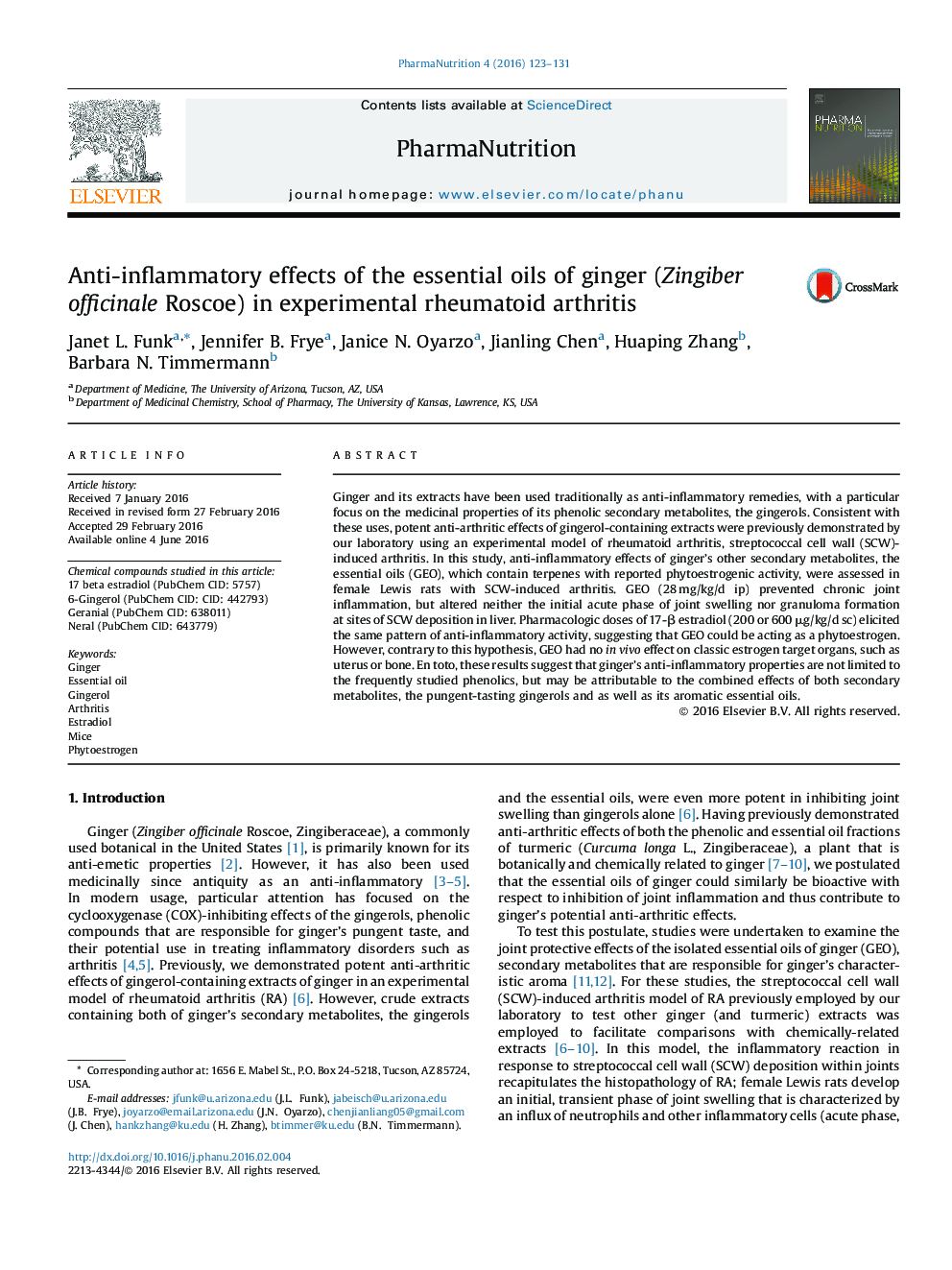| Article ID | Journal | Published Year | Pages | File Type |
|---|---|---|---|---|
| 2564393 | PharmaNutrition | 2016 | 9 Pages |
•While anti-inflammatory effects of ginger are often attributed to its gingerols, each of its secondary metabolites, the essential oils and the gingerols, are joint protective in an experimental arthritis model.•Both of ginger’s secondary metabolites (essential oils and gingerols) have anti-arthritic effects in an experimental model.•Anti-arthritic effects of ginger essential oils (GEO) mirrored those of 17-β estradiol.•However, GEO had no effect on classic estrogen-responsive organs.•GEO were well tolerated.•GEO and gingerols may have additive joint protective effects in arthritis.
Ginger and its extracts have been used traditionally as anti-inflammatory remedies, with a particular focus on the medicinal properties of its phenolic secondary metabolites, the gingerols. Consistent with these uses, potent anti-arthritic effects of gingerol-containing extracts were previously demonstrated by our laboratory using an experimental model of rheumatoid arthritis, streptococcal cell wall (SCW)-induced arthritis. In this study, anti-inflammatory effects of ginger’s other secondary metabolites, the essential oils (GEO), which contain terpenes with reported phytoestrogenic activity, were assessed in female Lewis rats with SCW-induced arthritis. GEO (28 mg/kg/d ip) prevented chronic joint inflammation, but altered neither the initial acute phase of joint swelling nor granuloma formation at sites of SCW deposition in liver. Pharmacologic doses of 17-β estradiol (200 or 600 μg/kg/d sc) elicited the same pattern of anti-inflammatory activity, suggesting that GEO could be acting as a phytoestrogen. However, contrary to this hypothesis, GEO had no in vivo effect on classic estrogen target organs, such as uterus or bone. En toto, these results suggest that ginger’s anti-inflammatory properties are not limited to the frequently studied phenolics, but may be attributable to the combined effects of both secondary metabolites, the pungent-tasting gingerols and as well as its aromatic essential oils.
Graphical abstractFigure optionsDownload full-size imageDownload as PowerPoint slide
